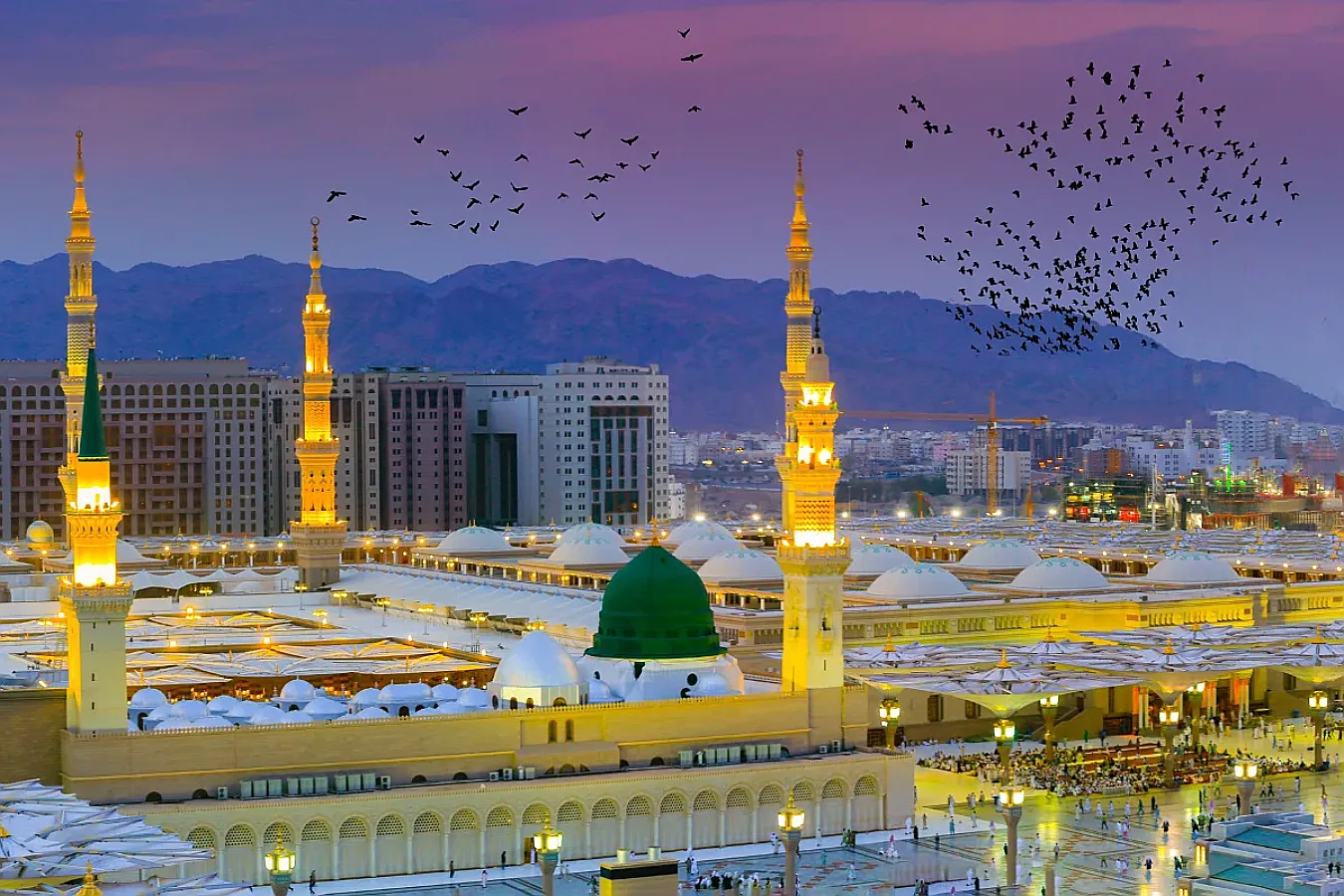The Prophet's Mosque ﷺ (Masjid Nabawi)
Historical Significance:
Masjid Nabawi is the final resting place of the Prophet Muhammad ﷺ, as well as his close companions Abu Bakr Al-Siddiq and Umar ibn Al-Khattab (may Allah be pleased with them). Ar-Rawdah An-Nabawiyyah (The Noble Garden), located between the Prophet's tomb and his pulpit (minbar), is regarded as one of the gardens of paradise. The mosque is a site of immense spiritual significance, drawing millions of visitors annually from across the globe.
Architectural Features:
Today, the mosque is an architectural masterpiece and one of the largest mosques in the world. Its vast capacity allows it to accommodate over one million worshippers. It features:
10 Minarets, each over 100 meters tall.
56 Retractable Domes, allowing ventilation and sunlight to enter.
Giant Umbrellas in the courtyards that provide shade and comfort to worshippers.
Modern Amenities such as air conditioning, escalators, and expansive prayer halls.
Expansion History:
The mosque has undergone numerous expansions since its initial construction.
First Expansion by Caliph Umar ibn Al-Khattab: Enlarged the mosque to accommodate the growing Muslim community.
Major Ottoman Expansion (1517 CE): Added domes, minarets, and enhanced the mosque’s aesthetics.
Modern Saudi Expansions (20th–21st Century): Under the reigns of King Fahd, King Abdullah, and King Salman, Masjid Nabawi was transformed into its current form. This included new facilities, expanded courtyards, and integration of cutting-edge technology for crowd management and security.
Visiting Masjid Nabawi:
Pilgrims performing Hajj or Umrah often visit Masjid Nabawi as part of their journey.
The mosque is open 24/7, with dedicated spaces for men and women.
Ziyarah (visiting) the Prophet’s tomb and offering prayers in the Rawdah is a cherished spiritual act.
Frequently Asked Questions
Find quick answers to the most common questions about ZiyaraGo. Have more questions? We’re here to help!
-
What is ZiyaraGo?
ZiyaraGo is a mobile app designed to simplify your pilgrimage by providing all essential services in one place—hotel bookings, transportation, guides, and more.
-
Is the app free to use?
Yes, downloading and using ZiyaraGo is completely free. You only pay for the services you book through the app.
-
Can I book hotels and transportation in advance?
Absolutely! You can browse and book hotels, car rentals, and transfers directly through the app before your journey.
-
How do I find landmarks or holy sites?
ZiyaraGo provides an interactive map that helps you locate important landmarks, mosques, and historical sites with ease.
-
What should I do if I need assistance?
Our in-app support team is available to assist you with any issues or questions during your pilgrimage. Just reach out via the app.
Can’t find the answer to your question?
Contact us, and we'll get back to you as soon as we can.

